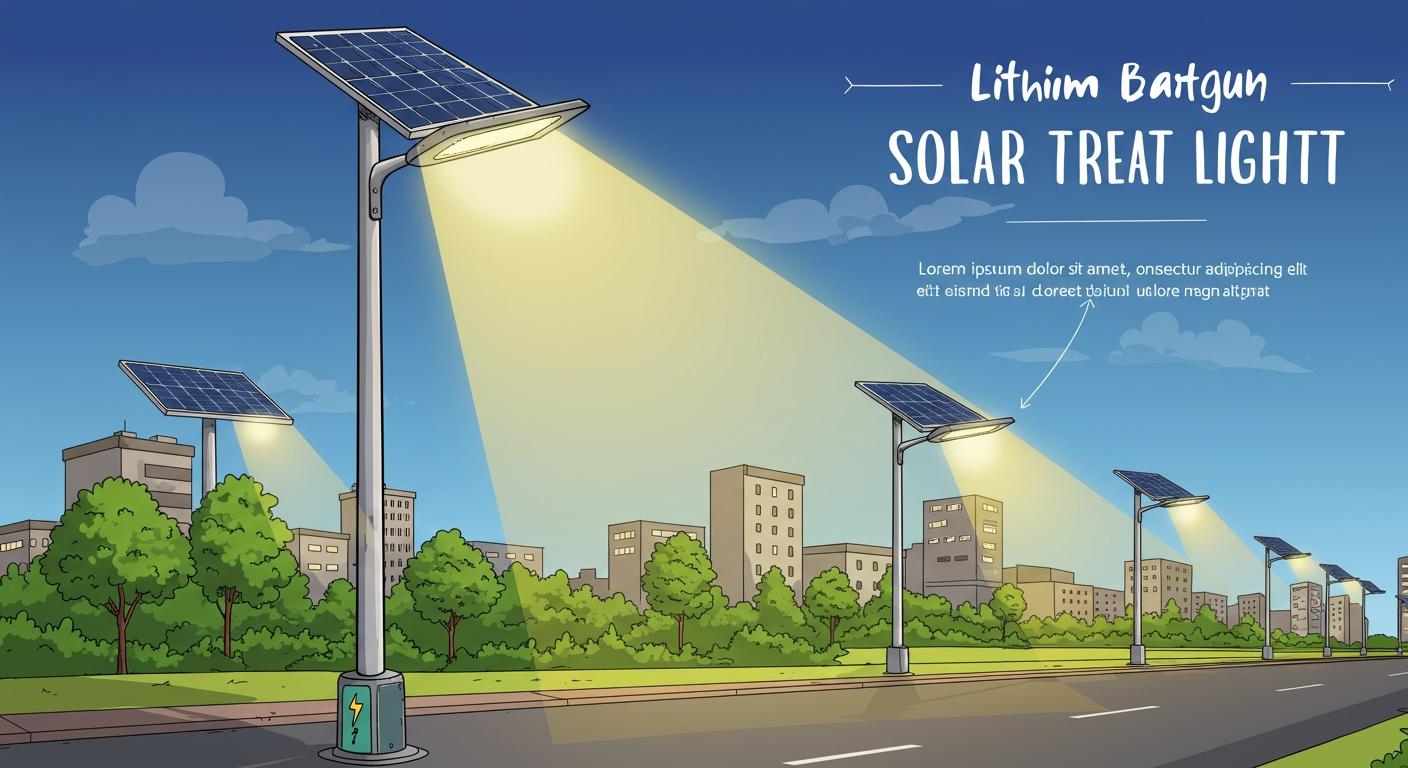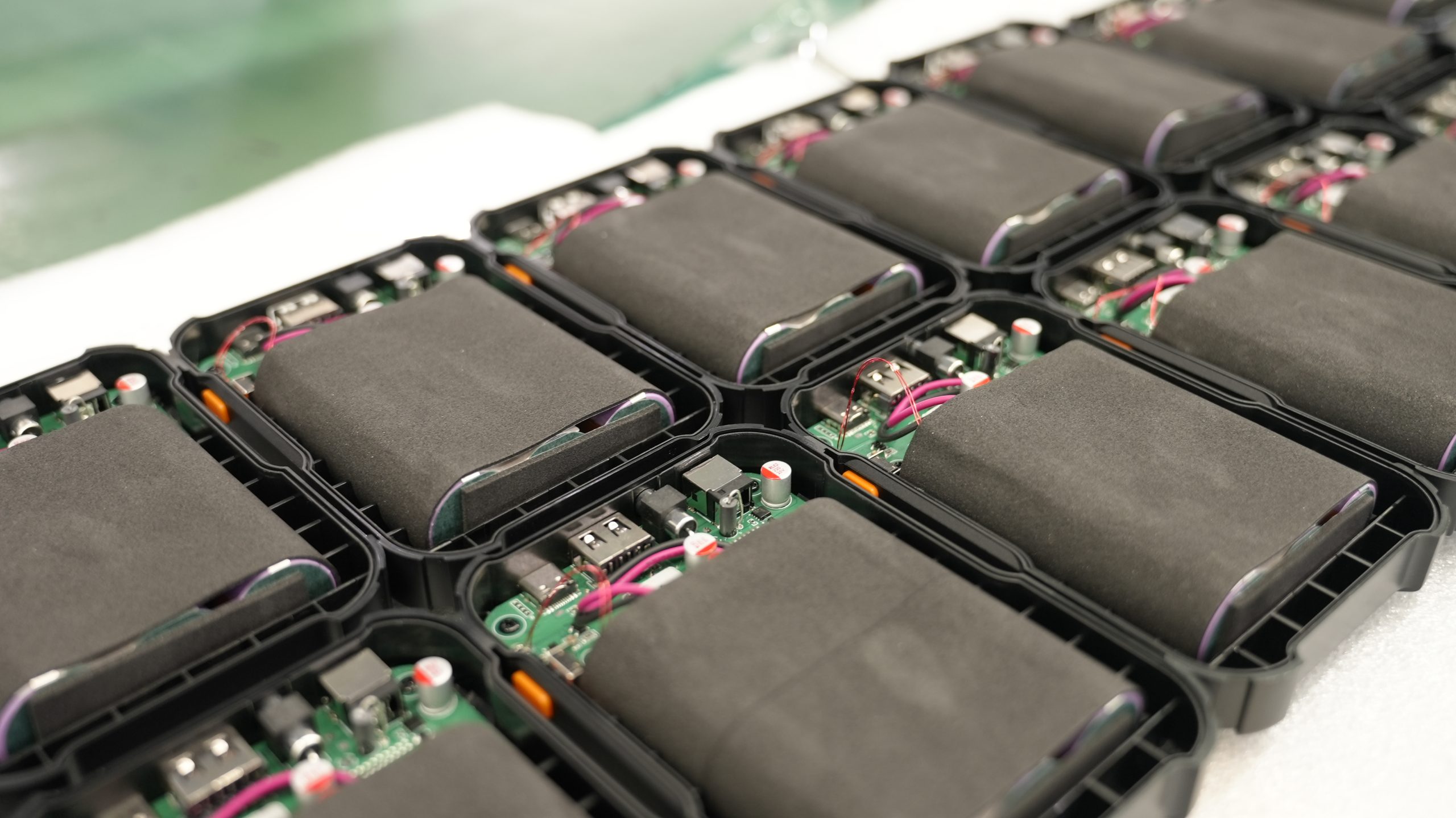
Efficient lithium battery packs form the backbone of energy efficient Solar Street Lights. You benefit from advanced lithium-ion technologies, including LiFePO4 and 32700 cells, which now account for over 60% of the global market.
Advantage | Description |
|---|---|
Lifespan | LiFePO4 batteries last over 15 years, outperforming older technologies. |
Reliability | Structural improvements reduce failure rates and ensure consistent lighting. |
Key Takeaways
Lithium batteries, especially LiFePO4, offer over 15 years of lifespan, ensuring long-term reliability for solar street lights.
Using lithium batteries reduces energy loss during charging, maximizing the efficiency of solar street lights and saving costs.
Proper recycling and disposal of lithium batteries are crucial to minimize environmental impact and support sustainability.
Part 1: Lithium Battery Benefits

1.1 Energy Efficiency
You need solar street lights that deliver maximum energy-saving performance. Lithium battery packs, especially those using LiFePO4 chemistry, set a new standard for efficiency in solar lighting. The integrated structure of the battery and controller reduces energy loss during charging and discharging. This design ensures that more solar energy is stored and used for lighting, rather than wasted as heat or lost through inefficient transfer.
Feature | Benefit |
|---|---|
Integrated structure of battery and controller | Reduces energy loss through efficient charging and discharging |
Long service life (up to 10 years) | Ensures consistent performance and reliability over time |
Intelligent optimization | Adjusts power levels based on conditions, minimizing waste and ensuring lights function even in adverse weather conditions |
You benefit from intelligent optimization, which automatically adjusts power levels based on real-time conditions. This approach minimizes waste and guarantees that your solar street lights remain operational, even during cloudy days or harsh weather. The high energy density and long cycle life of LiFePO4 batteries support energy-saving emission reduction goals for your infrastructure projects.
1.2 Environmental Impact
When you choose lithium battery packs for solar street lights, you support energy-saving emission reduction and help reduce pollution. However, it is important to understand the environmental impact of both lithium and lead-acid batteries:
Lead-acid batteries are heavy and create a significant environmental burden due to their lead content.
Lithium-ion batteries, including LiFePO4, have an environmental toll from lithium mining and emissions during production.
Improper disposal of lithium batteries can release toxic substances like lithium and cobalt, while lead-acid batteries can leak lead and sulfuric acid, contaminating soil and water.
Both types require proper recycling to avoid environmental harm. Lithium batteries are also linked to habitat destruction and water contamination during mining.
Tip: Always work with suppliers who offer recycling programs for lithium battery packs to minimize environmental risks.
1.3 Performance vs. Traditional
You expect your solar street lights to outperform traditional systems. Lithium battery packs, especially those using LiFePO4 chemistry, deliver superior results compared to lead-acid batteries. The following table highlights key differences:
Feature | Lithium Batteries (LiFePO4) | Lead-Acid Batteries |
|---|---|---|
Energy Density | Higher, stores more energy | Lower, stores less energy |
Lifespan | 5 to 8 years | 3 to 5 years |
Weight | Lighter, easier to install | Heavier, complicates installation |
Charging Efficiency | Fast charging, higher efficiency | Slower charging, lower efficiency |
Cost | Higher cost | Lower cost |
LiFePO4 batteries provide higher capacity and energy density, which means you get more energy-saving performance from each charge. Their lighter weight simplifies installation and maintenance, reducing labor costs for your projects. Fast charging and higher efficiency ensure that your solar street lights operate reliably, even with limited sunlight.
However, you should note that LiFePO4 batteries show a decline in capacity in cold environments, especially below 0°C, where they may deliver only 50-70% of their rated capacity. Internal resistance increases in these conditions, which can further affect performance. Other lithium chemistries, such as lithium manganese oxide (LMO), may perform better in extreme cold, but they often have shorter cycle life and lower efficiency.
By selecting the right lithium battery chemistry for your location and application, you maximize the operational benefits and energy-saving emission reduction potential of your solar street lights.
Part 2: Technical Features
2.1 Capacity & Density
You need solar street lights that deliver consistent, high-quality illumination. The choice of lithium-ion batteries, especially those using LiFePO4 chemistry, directly impacts the performance of your lighting systems. The 32700 lithium battery cell stands out in the industry for its optimal balance of size, capacity, and reliability. Each 32700 LiFePO4 cell offers a typical capacity of 6000mAh, making it ideal for solar applications that demand long-lasting power.
Cell Type | Capacity |
|---|---|
32700 LiFePO4 lithium-ion battery cell | 6000mAh |
When you scale up to battery packs, you can select from a range of configurations to match your project’s requirements:
Model | Rated Capacity |
|---|---|
12.8V30AH | 30AH |
12.8V50AH | 50AH |
12.8V100AH | 100AH |
High energy density allows you to store more energy in a compact space. This feature reduces the size and weight of your solar street light installations, making them easier to mount on poles or integrate into urban infrastructure. You benefit from a system that maximizes energy storage without increasing the footprint or complexity of your project.
Note: Selecting the right capacity ensures your solar street lights operate through long nights and cloudy days, maintaining reliable performance for critical infrastructure.
2.2 Charge/Discharge Cycles
You want your investment in solar street lighting to last. LiFePO4 batteries excel in this area, offering a high number of charge and discharge cycles. Most lithium-ion batteries in this category can endure over 2,000 cycles, with some reaching up to 3,000 or more. This longevity translates to a service life of 5 to 10 years, far surpassing traditional lead-acid batteries.
LG states that LiFePO4 cells can handle over 2,000 charge/discharge cycles.
The lifespan of lithium-ion batteries, including LiFePO4, ranges from 5 to 10 years.
On average, batteries in solar street lights last 2 to 10 years, with lithium-ion batteries providing the longest service life.
Battery Type | Typical Lifespan (Years) | Cycle Life (Cycles) | Maintenance Needs |
|---|---|---|---|
Lithium-Ion (Li-ion/LiFePO4) | 5 – 10 | 1,000 – 3,000+ | Low |
Lead-Acid | 3 – 5 | 300 – 500 | Medium |
Gel (Lead-Acid subtype) | 2 – 5 | 300 – 500 | Low |
You reduce maintenance costs and minimize downtime by choosing lithium-ion batteries with high cycle life. This reliability is essential for urban lighting projects, where consistent operation and low maintenance are critical. Battery management systems play a key role in extending the life of your batteries by monitoring charging and discharging, balancing cells, and protecting against overcharging or deep discharge. Learn more about battery management systems.
2.3 Durability Outdoors
You face unique challenges when deploying solar street lights outdoors. Weather, temperature swings, and environmental hazards can impact battery performance. LiFePO4 batteries offer superior durability, making them the preferred choice for outdoor solar lighting. These batteries withstand both high and low temperatures, maintaining stable capacity even in extreme conditions.
Long-life batteries can last up to 4,000 cycles, providing over 10 years of design life.
Lithium-based batteries enhance durability and reduce failure rates in solar lighting systems.
These batteries resist high and low temperatures better than lead-acid options.
Lithium-ion batteries deliver high energy density and efficiency, remaining compact, safe, and stable for outdoor use.
Condition | Performance Metric |
|---|---|
Hot Climate | Retains capacity at 50–60°C |
Cold Climate | Retains 75-80% capacity at -30°C |
General Stability | 95% capacity at -20°C |
Lifespan | Up to 8 years with deep usage |
Weather Resistance | IP65-rated enclosures for mounted batteries |
Installation | Buried batteries benefit from stable underground temperatures |
You can rely on lithium-ion batteries to deliver consistent performance, even in harsh environments. IP65-rated enclosures protect your batteries from dust and water, ensuring long-term stability. For installations in areas with extreme temperatures, you can choose to bury batteries underground, where temperatures remain more stable. Battery management systems further enhance durability by regulating charging and discharging, preventing damage from environmental stress.
Tip: For urban infrastructure projects, always specify LiFePO4 batteries with robust battery management systems to maximize reliability and minimize maintenance.
Part 3: MPPT & Solar Integration
3.1 MPPT Role
You want your solar street lights to deliver maximum performance, even in changing weather. Maximum Power Point Tracking (MPPT) technology ensures your solar panels always operate at their highest efficiency. MPPT controllers continuously track the optimal voltage and current, extracting up to 30% more power compared to non-MPPT systems. This advanced technology adapts to sunlight variations, so your battery receives the most effective charging throughout the day.
Feature | Specification |
|---|---|
Tracking Efficiency | >99% |
Charge Conversion Efficiency | Up to 96% |
Discharge Conversion Efficiency | Up to 95.5% |
This model utilizes advanced MPPT technology for efficient charging.
Evidence Type | Description |
|---|---|
Efficiency Increase | MPPT systems can extract up to 30% more power compared to non-MPPT systems. |
Performance Optimization | Continuously tracks the maximum power point, ensuring solar panels operate at optimal levels. |
Adaptability | Adjusts to varying weather conditions, further enhancing energy extraction efficiency. |
3.2 Battery Management
You need a reliable battery management system (BMS) to protect your lithium battery packs and optimize charging. The BMS monitors voltage, temperature, and current, ensuring safe operation and long battery life. It balances energy across cells and manages charging and discharging cycles. This system also provides real-time alerts for any irregularities, so you can address issues before they affect your solar street lights.
Function | Description |
|---|---|
Voltage Measurement | Measures the battery voltage to ensure it operates within safe limits. |
Temperature Measurement | Monitors the battery temperature to prevent overheating. |
Current Measurement | Tracks the current flow to manage charging and discharging effectively. |
Energy Balance | Ensures that energy is distributed evenly across the battery cells. |
State of Charge (SOC) Calculation | Calculates and displays the current charge level of the battery. |
Abnormal Alarm | Alerts users to any irregularities in battery performance. |
Charge and Discharge Management | Manages the charging and discharging cycles to prolong battery life. |
Communication | Facilitates communication between the battery and other system components. |
Heat Management | Some systems include features to manage battery heating. |
Battery Health Status (SOH) | Analyzes the overall health of the battery. |
Insulation Resistance Measurement | Checks the insulation resistance to ensure safety. |
Protects lithium battery charge and discharge controller.
3.3 System Efficiency
You benefit from the integration of MPPT controllers and BMS, which enhances both safety and efficiency. MPPT controllers prevent overcharging and deep discharge, while the BMS manages battery health and charging cycles. This combination extends battery lifespan and reduces maintenance costs. MPPT efficiency can reach up to 99.9%, and charging efficiency is about 20% higher than traditional controllers. These improvements lower system costs and support your infrastructure projects.
Cost-Saving Aspect | Description |
|---|---|
Eliminating Electricity Costs | Solar street lights operate independently of the grid, eliminating ongoing utility bills. |
Lower Installation Costs | Self-contained units reduce the need for extensive wiring and labor, leading to cheaper setups. |
Minimal Maintenance Requirements | LEDs last longer and require less frequent replacements, reducing maintenance expenses significantly. |
Tip: For maximum return on investment, always specify lithium battery packs with advanced MPPT and BMS integration for your solar street lights.
Part 4: Solar Street Lights in Practice

4.1 Market Trends
You see rapid growth in the adoption of lithium battery-powered solar street lights across commercial and municipal projects. The market reflects several key trends:
Municipalities lead the way, seeking to lower operational costs and boost sustainability.
Smart technologies now integrate with led street lights, enabling adaptive lighting and remote monitoring.
Advances in lithium battery storage and solar panel efficiency drive higher performance and reliability.
Recent years show a strong upward trajectory in market value:
Year | Market Value (in million USD) | Projected Growth Rate (%) |
|---|---|---|
2024 | 4,256 | – |
2032 | 6,682 | 6.8 |
You benefit from global policy support, such as China’s Renewable Energy Law, the European Commission’s Net-Zero Industry Act, and the US Inflation Reduction Act, all of which prioritize clean energy and infrastructure upgrades.
4.2 Real-World Cases
You can find led street lights with lithium batteries in city centers, highways, and industrial parks. Municipal authorities increasingly choose these systems for their high performance and low maintenance. In many cities, led street lights powered by lifepo4 batteries now illuminate public spaces, reducing energy costs and supporting sustainability goals. Modern commercial solar lighting systems use lithium batteries to deliver reliable lighting, even in areas with frequent cold weather performance challenges. These systems maintain high led output and efficient charging, even in harsh climates.
Note: Urban populations are projected to reach 60% globally by 2030. Smart city initiatives now treat solar street lights as essential infrastructure.
4.3 Future Outlook
You can expect further advancements in lithium battery technology for led street lights. The next decade will bring:
Smart integration of real-time data for adaptive led performance and longer battery life.
Fast charging capabilities and more energy-efficient solar panels.
Improved synergy between batteries and solar, ensuring reliable illumination every night.
Evidence Description | Impact on Efficiency |
|---|---|
Advanced battery technologies like lithium-ion and solid-state batteries | Improved energy storage and longer battery life, leading to consistent lighting and lower maintenance costs. |
Smart Battery Management Systems (BMS) | Prevents overcharging and deep discharging, extending battery life and minimizing downtime. |
Incorporation of IoT technologies and motion sensors | Optimizes energy usage and enhances safety, contributing to overall efficiency. |
You should consider custom consultation to tailor lithium battery solutions for your infrastructure projects and maximize led street lights performance, especially in regions with demanding cold weather performance requirements.
You gain unmatched efficiency, eco-friendliness, and versatility by choosing lithium battery packs with MPPT technology for your solar energy system. Recent innovations, such as high-efficiency solar panels and AI-based algorithms, continue to improve reliability and lower costs. Ongoing advancements will further enhance sustainability and performance for your infrastructure projects.
Innovation Type | Description |
|---|---|
High-Efficiency Solar Panels | Convert more sunlight into electricity, boosting output. |
FAQ
What makes LiFePO4 lithium battery packs ideal for solar street lights in infrastructure projects?
LiFePO4 lithium battery packs deliver high energy density, long cycle life, and stable platform voltage. You gain reliable performance and reduced maintenance for infrastructure lighting. Learn more about LiFePO4 batteries.
How does a Battery Management System (BMS) improve lithium battery safety and efficiency?
A BMS monitors voltage, temperature, and current. You benefit from balanced charging, extended battery life, and enhanced safety. Explore BMS solutions for industrial applications.
Why should you choose Large Power for custom lithium battery packs in commercial solar lighting?
Large Power offers tailored lithium battery packs with advanced BMS and MPPT integration. You receive expert support and reliable solutions. Request a custom consultation.




